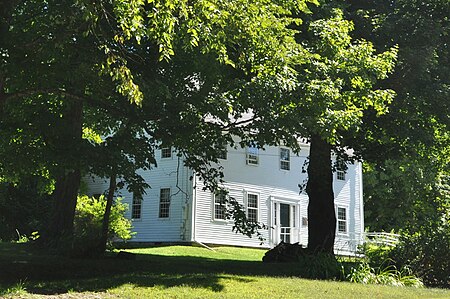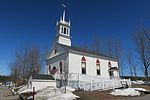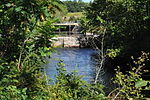Parson Smith House
Buildings and structures in Windham, MaineColonial architecture in the United StatesHistoric New EnglandHouses completed in 1764Houses in Cumberland County, Maine ... and 2 more
Houses on the National Register of Historic Places in MaineNational Register of Historic Places in Cumberland County, Maine

The Parson Smith House is a historic house on River Road in southern Windham, Maine. Built in 1764 and virtually unaltered since, it is one of the state's finest examples of Colonial Georgian architecture. It was listed on the National Register of Historic Places in 1973. Now a private residence, it was for 40 years a historic house museum owned and operated by the Society for the Preservation of New England Antiquities.
Excerpt from the Wikipedia article Parson Smith House (License: CC BY-SA 3.0, Authors, Images).Parson Smith House
River Road,
Geographical coordinates (GPS) Address Nearby Places Show on map
Geographical coordinates (GPS)
| Latitude | Longitude |
|---|---|
| N 43.716111111111 ° | E -70.3925 ° |
Address
River Road 93
04062
Maine, United States
Open on Google Maps








